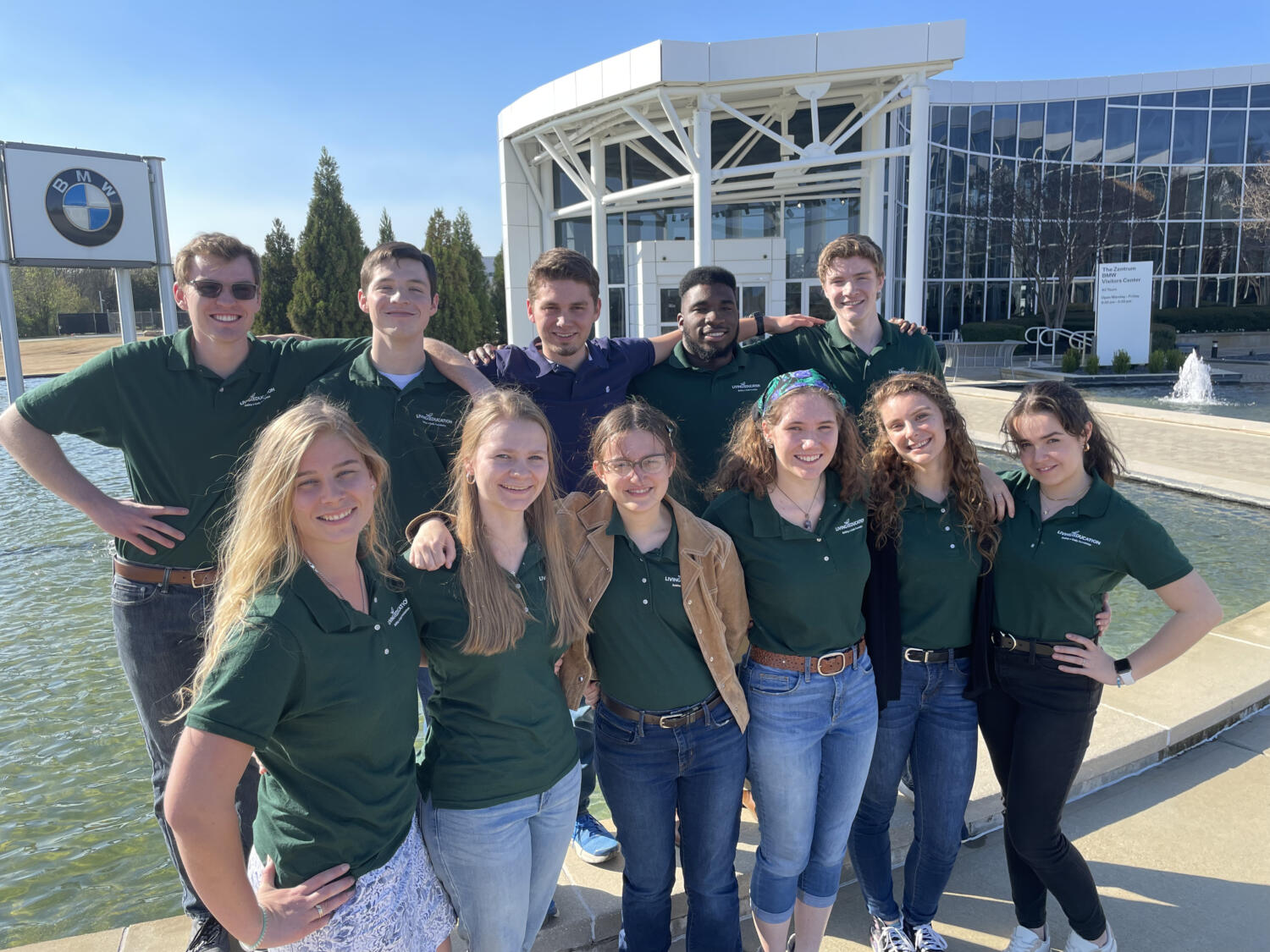How the Ultimate Driving Machine Is Made! (BMW Tour)
Author: Kaleb Johnson | Student, Living Education – Charlotte, 2022-23
Estimated reading time: 4 min.
The Living Education students toured the BMW plant in Spartanburg, South Carolina, glimpsing a high-quality modern industrial process.
The BMW plant is a marvel of modern manufacturing. The plant produces around 1,500 cars per day—models X3, X4, X5, X6, and X7—making it the highest production BMW plant in the world. The Living Education students had the privilege to tour this plant, and its attached Museum, and see how the “ultimate driving machine” is made.
The Zentrum Museum
The BMW campus has a modern-looking building called the Zentrum Museum that houses several BMW cars that are important to both the brand and this particular plant. For instance, the first ever BMW produced in this plant—also the first ever produced in America—is on display, covered in the signatures of all the employees that worked for BMW at the time!
This museum is also the starting point for the plant tours, so the Living Education students thoroughly explored the cars on display while waiting for the tour to begin. The two most popular cars among the students were two BMWs on display that starred in James Bond films, the z8 and the z3.


Making the Ultimate Driving Machine
After perusing the Museum, the Living Education students set off on a tour of the plant. On this tour, no phones or cameras were allowed to be used, and the students, with their tour guide, walked right through the actual manufacturing lines.
The first stop on the tour was the body shop. This massive building—over a million square-feet—welded together the body of the BMWs. The students walked around the shop, watching massive robot arms lift whole undersides of cars weighing thousands of pounds, and seeing precise and methodical welding all along the assembly line. In went metal parts, seemingly insignificant, and out came the body of a precisely engineered vehicle, all from an unceasing assembly line of robotics and personnel.
The second area of the tour was the assembly hall. Here, the body of the car, after it had gone to the paint shop, entered and had its inner components added, and its doors, windshield, and sunroof put in. By the time it left, the car was fully functional. This assembly line relied on people more than robotics, but it still used robotics widely to assist the assemblers with moving heavy objects or improving the ergonomics of their working condition. For instance, part of the assembly line had all the cars rotated on their side so that people could more comfortably add parts to the bottom of the vehicle.


The final stage for these BMWs consisted of a step called “spanking the baby.” Once the car has passed all inspections and tests, the iconic BMW logo is placed on the nose of the car and tapped in with a rubber mallet. At this point, the car is complete and ready to be delivered to its owner.
Overall, the BMW plant produces 1500 cars per day—all of which are already purchased orders and built to a specification with intense quality checks. The Living Education students got a glimpse into how excellence is achieved in the automotive industry. They also saw how a premiere company manages employees, ensures quality, and encourages continuous improvement. The Living Education students saw how the “Ultimate Driving Machine” really is made.
Everyone’s Favorite Car
When the students returned to the museum, they were impressed, and a little bit tired (the tour involves around 2 miles of walking over about 2 hours). But they decided to do one last thing. They all picked a favorite BMW in the museum, and also bought some stuff at the gift shop (why not, right?). Here are all the students with their favorite BMW.











The previous activity the Living Educations students had was a fun adventure to the JAARS facility in Waxhaw. Read all about that here: Come Fly with Me (JAARS Trip).

Kaleb Johnson is a student in the Living Education-Charlotte Program. He graduated with a degree in Chemical Engineering from the University of Alabama in Huntsville in the spring of 2022. In addition, Kaleb enjoys writing, video-making, trying new activities (anything and everything), playing chess, and debating (it’s not arguing!) with people. He currently works in the Living Education department producing written content & videos and helping with a variety of other projects.









